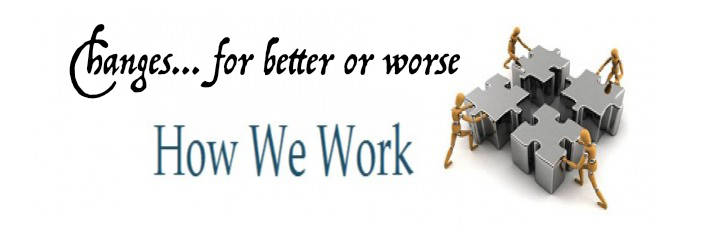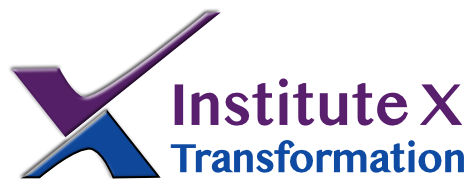A big question mark hanging over the plans of executives, workers, commercial property managers, and hospitality venues/retail around business districts is: “What is the future of (office) work?”[1]

We have some thoughts, mostly on the employee-driven side of change. This gets the most airtime—as though office workers suddenly have excess leverage. Maybe they do, but the offsetting forces are tradition and the golden rule. (“Who has the gold makes the rules.”)
Senior executives—especially CEOs, citing productivity, greater innovation, serendipitous and spontaneous team synergy, and cultural protection—while avoiding loneliness—are somewhere between demand and plea for white collar cubical retrenchment.
Historical Evolution of How We Work
Some people will refer to the Internet and digitization; some will point to (mobile) telephony; yet others to the computer or even the automobile as critical. They will make the case that these were revolutions that changed how we work.
We agree… to a point. If you want to see the last great change to how we work, you have to go back to the half century following 1760, during the Industrial Revolution.
The massive changes to how we work ushered in by the Industrial Revolution have persisted and maybe because old habits die hard, will persist longer. The Industrial Revolution solidified the organizational hierarchy as an operating structure; it brought everyone under one roof; it created interdependent specialties (that led to teams); it fixed the harmonized work period; it cemented the paid-for-time labour compensation model. The list goes on.
Subsequent revolutions have nibbled at the edges of this structure, mostly to what we do and how we do it. Mostly they have been weak tea in terms of the grander tidal movements of “how we work.”
Trends To Look For
Assuming labour is stronger than management—or at least that management prefers “wins” to “victories”—here are some ways that office workers’ work is likely to evolve over the coming decade.[2]
Remote Work
Remote work has become increasingly popular, accelerated by the COVID-19 pandemic. Many workers may continue to work from home or other locations. Organizations will want to adjust policies, technology, and management strategies to support remote work effectively. One policy/technology/strategy especially important but easy to overlook amid all the collaboration tools, is cybersecurity defense. Remote work increases cyber-risk.
Many organizations may offer more remote or hybrid work options for those that can or even want to partake, especially as the benefits become more apparent and the (productivity loss) fears dissipate.
Flexible Scheduling
Remote work will lead to flexible scheduling demands. Within reason, many workers may choose to work non-traditional hours or days to accommodate their personal lives. Flexible scheduling options and effective workload management across different schedules will be required of organizations. Recognizing the benefits of offering more schedule flexibility is likely to entrench this trend.
Automation
Automation and artificial intelligence (AI) will continue to transform many office jobs. More routine tasks will likely be given over to machines, freeing up human workers to focus on more creative and strategic work. The pace and extent of automation will vary across industries and jobs. Organizations will need to carefully consider the impact of automation on their workforce and develop strategies to transition effectively.
Collaborative Tools
Collaboration tools will become even more prevalent and important. Teams must be able to communicate, share files, and collaborate effectively especially when working in different locations. The early and rushed deployments of tools like Slack and Teams in their early incarnations exposed technological and user behaviour issues that are being remedied and improved to suit how people are most productive. Organizations will need to continue investing in and effectively managing these critical support tools.
Skill Development
For their part, workers will need to develop new, higher value skills. Organizations will need to invest in training and development programs to help those workers acquire new skills as both adapt to changing job requirements.
Relative emphasis on these trends will vary depending on the industry, the type of job, and the specific organization.
Workers’ Action To Prepare
Here are some ways office workers can stay ahead of these changes:
- Stay Up-to-Date: Stay informed about industry trends, including the impact of automation and the skills that will be in demand in the future.
- Develop Remote Work Skills: Develop the skills needed to be effective remotely, such as communication skills, time management, and technical proficiency with collaboration tools and software.
- Embrace Lifelong Learning: Be willing to learn new skills and adapt to new technologies, essential for staying competitive and remaining employable.
- Build a Strong Network: Prioritize building relationships with colleagues, industry peers, and mentors who can offer guidance and support.
- Be Flexible and Adaptable: Finally, be prepared to adjust as the nature of work evolves. Be willing to try new approaches, take on new responsibilities, and work in different environments.
Impact On Transformation and Change Leaders
There are likely to be significant impacts on change management professionals and transformation/change leaders. These are some of the higher-probability impacts.
- Increased Demand for Change Management: Adapting to new technologies, work processes, and workforce demographics will derive increased demand for professionals to help guide these transitions. Change management will become an organizational critical competency.
- New Challenges/Opportunities: Adapting approaches to accommodate remote work, flexible scheduling, and the use of collaborative tools will create new opportunities for innovation and creativity in the change management process.
- Need for New Skills and Expertise: Rapidly and persistently acquiring proficiency with new technologies, knowledge of remote work and collaboration tools, and understanding how to manage and motivate a geographically dispersed workforce will be essential.
- Increased Importance of Communication: Effective communication will become even more critical in a remote and rapidly changing workplace. Skill at effectively conveying information and building support for change initiatives across a diverse and dispersed workforce will intensify.
- Importance of Employee Engagement: Employee engagement will become more important and challenging. Focus on building a culture of remote engagement and inclusion to ensure that workers remain committed to the organization’s goals and values.
That is how work will transform over the decade. Or maybe not. As always, watch the signals and stay alert.
Institute X is a transformation consultancy and transformation/change leader coaching firm. One of its online presences is The Change Playbook. Be sure to check out the abundance of practical and pragmatic guidance.
[1] The fate of factory and other “x floor” work is in little doubt.
[2] The way I’m using it, a “win” is achieving the goal while “victory” is vanquishing the opposition. Mind the difference.

Leave a Reply